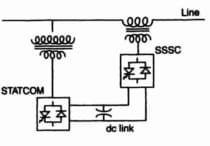 |
| Basic Electrical |
1. The maximum power
that a 12 V d.c. source with an internal resistance of 2 ohm can supply to a
resistive load is_______.
a. 48 W
b. 36 W
c. 18 W
d. 12 W
2. In order to apply
superposition theorem, it is necessary that the network be only________.
a. Linear and
time-variant
b. Linear
c. Time-invariant and
reciprocal
d. Linear and reciprocal
3. If all the elements
in a particular network are linear, then the superposition theorem would hold,
when the excitation is______.
a. An impulse
b. AC or DC
c. AC only
d. DC only
4. Which of the
following theorems is applicable for both linear and non-linear circuits ?
a. Norton's
b. Thevenin's
c. Superposition
d. None of these
5. Consider the
following statements about Norton's equivalent of acircuit across a given two
load terminals:
1. Norton's equivalent
resistance is the same as Thevenin's equivalent resistance Rth.
2. Norton's equivalent
is the voltage equivalent of the network.
3. The load is connected
in parallel to the Norton's equivalent resistance.
Out of the above
statements, which statements hold true?
a. 2 and 3 only
b. 1 only
c. 1 and 3 only
d. 1, 2 and 3
6. When the power
transferred to the load is maximum, the efficiency is_______.
a. 100%
b. 50%
c. 75%
d. 25%
7. For a linear network
containing generators and impedances, the ratio of the voltage to the current
produced in other loop is the same as the ratio of voltage and current obtained
if the positions of the voltage source and the ammeter measuring the current
are interchanged.
a. Millman's theorem
b. Norton's theorem
c. Tellegen's theorem
d. Reciprocity theorem
8. Millman's theorem
yields equivalent_____.
a. Voltage source
b. Voltage or current source
c. Current source
d. Impedance or
resistance
9. If the source
impedance is inductive, for maximum transfer of power from the source the load,
the load should be______.
a. Complex conjugate of
complex source impedance
b. Resistive
c. Capacitive
d. None of the above
10. Assertion(A) :
Norton's theorem is called dual of the thevenin's theorem.
Reason(R) : If the
Thevenin's equivalent voltage source is converted to an equivalent current
source, the Norton's equivalent is obtained.
a. A is false but R is
true
b. A is true but R is
false
c. Both A and R are true
but R is not the correct explanation of A
d. Both A and R are true and R is the correct explanation
of A
11. Assertion(A) : In
any active network, maximum power transfer to the load takes place when the
load impedance is equal to an equivalent impedance of the network as viewed
from the terminals of the load.
Reason(R) : For finding
the maximum power transfer to the load, any network has to be first converted
into Thevenin's equivalent across the terminals of the load.
a. A is false but R is true
b. A is true but R is
false
c. Both A and R are true
but R is not the correct explanation of A
d. Both A and R are true
but R is the correct explanation of A
12. Assertion(A) : The
substitution theorem is very useful in the networks consisting the mutual
inductances.
Reason(R) : By the
subsititution theorem, the effect ofm utual inductances may be replaced by
equivalent dependent sources of the same value.
a. A is false but R is
true
b. A is true but R is
false
c. Both A and R are true
but R is not the correct explanation of A
d. Both A and R are true but R is the correct explanation
of A
13. Consider the
following statements related to Thevenin's theorem:
For the application of
Thevenin's theorem
1. The circuit should
not conotain non-linear elements.
2. The circuit may
contain unilateral or bilateral elements or both
3. There should not be
magnetic coupling between the load and circuit, to be replaced by Thevenin's
theorem
4. There should not be
controlled sources on the load size, controlled sources on the load size,
controlled from some other part of the circuit.
Which of the above
statements is/are true?
a.1 and 4 only
b. 1, 3 and 4 only
c. 2, 3 and 4 only
d. 1, 2 and 3 only
14. Which of the
following theorem is applicable to both linear and non-linear netwroks?
a. Substitution theorem
b. Norton's theorem
c. Superposition theorem
d. Thevenin's theorem





0 Comments
If you have any doubt, feel free to ask.